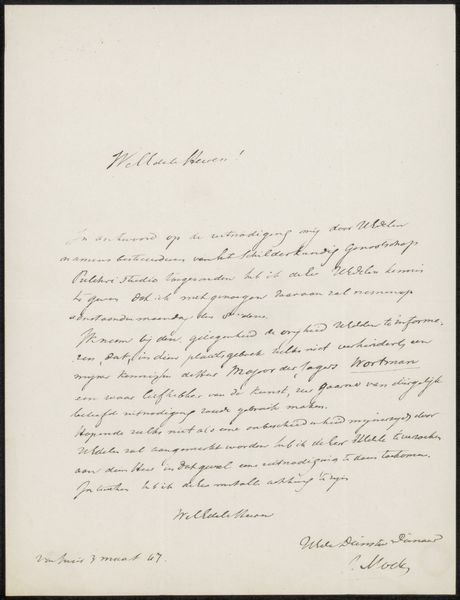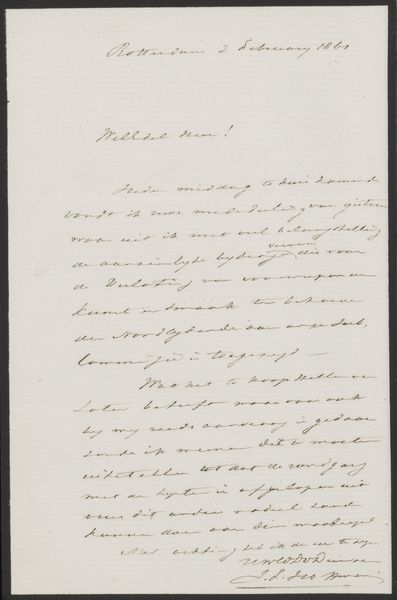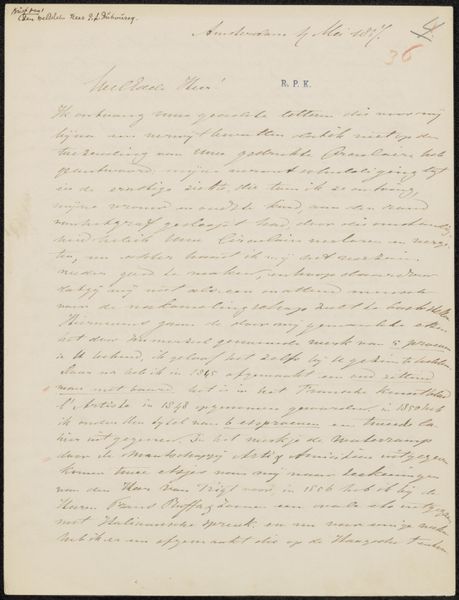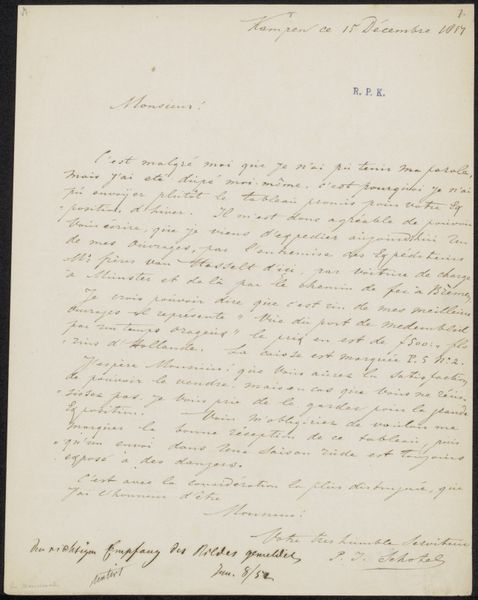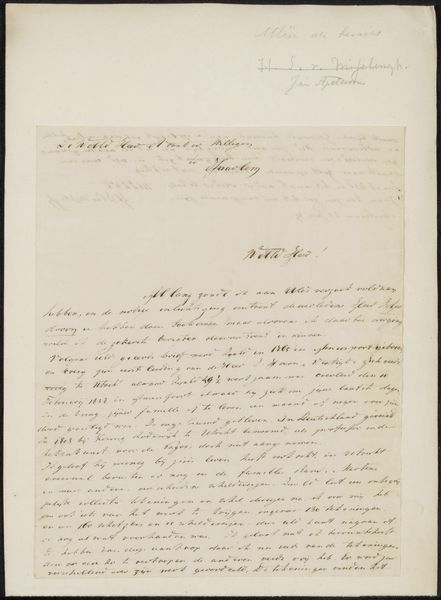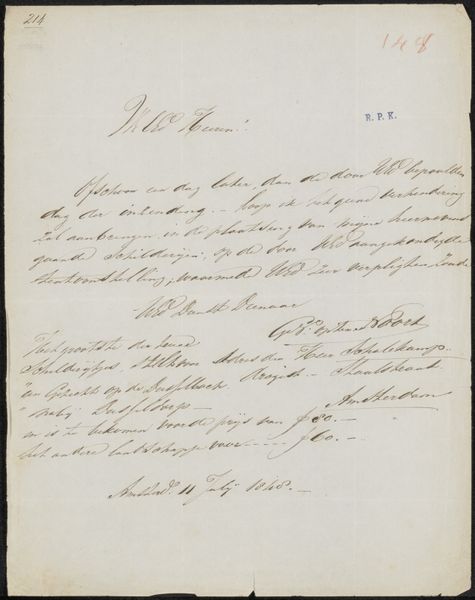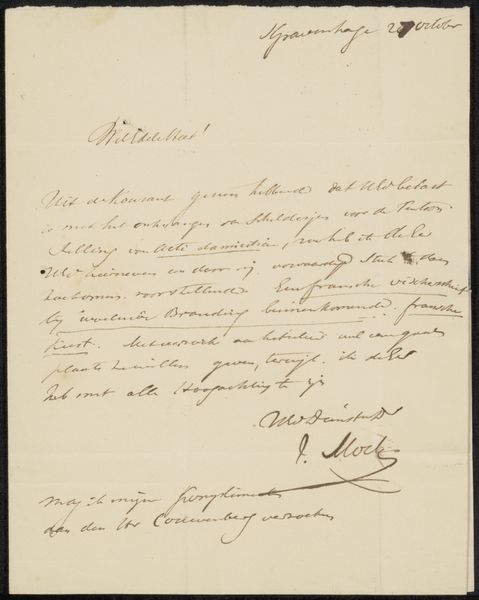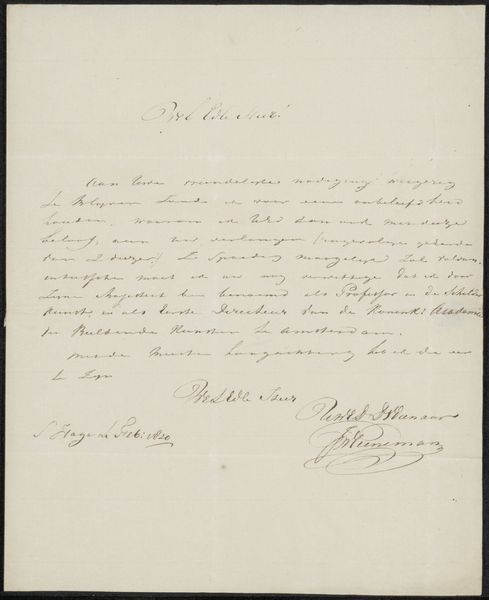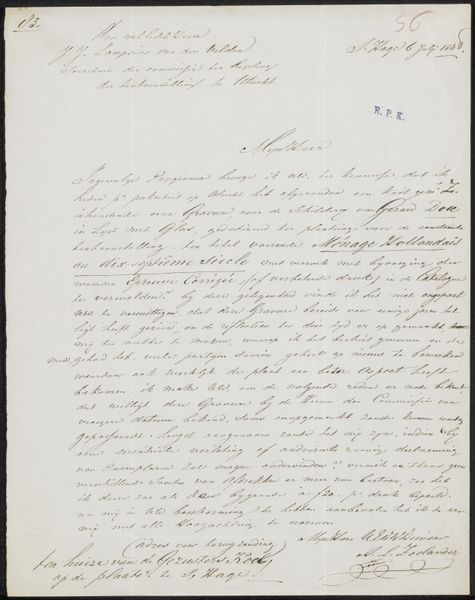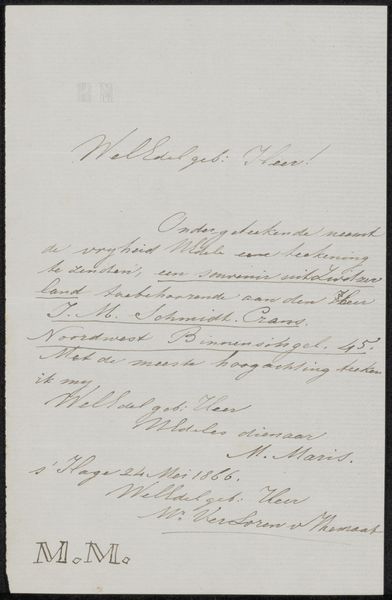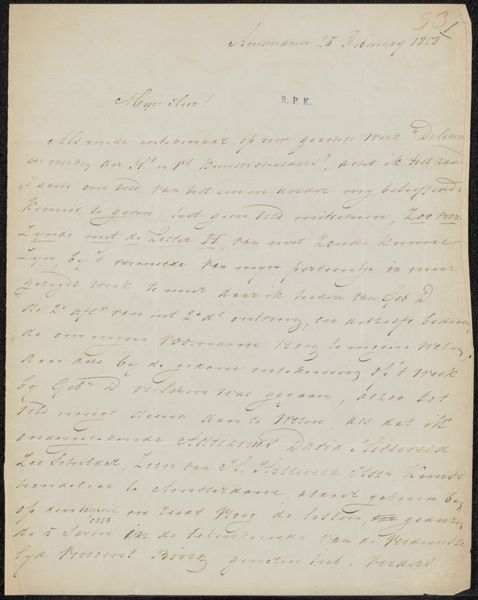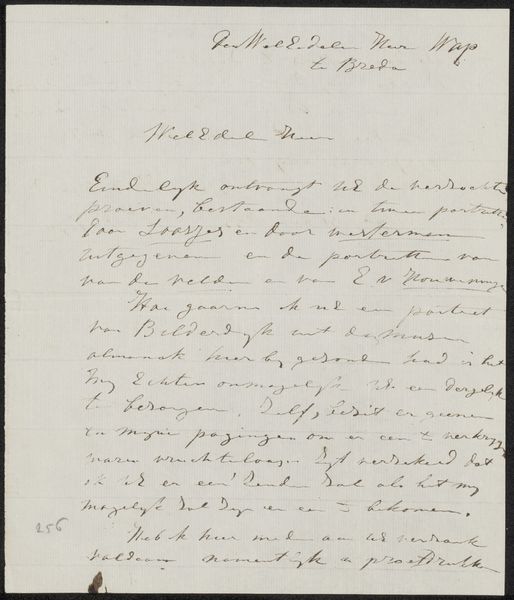
Brief aan Pieter Verloren van Themaat, secretaris van de Commissie van de Tentoonstelling van Levende Meesters in Utrecht Possibly 1866
0:00
0:00
drawing, paper, ink, pen
#
drawing
#
paper
#
personal sketchbook
#
ink
#
pen-ink sketch
#
sketchbook drawing
#
pen
Copyright: Rijks Museum: Open Domain
Curator: We're looking at a letter here, penned by Marinus van Raden, likely in 1866. It's addressed to Pieter Verloren van Themaat, who was the secretary of the Commission of the Exhibition of Living Masters in Utrecht. It's crafted with pen and ink on paper. Editor: It has a certain austerity about it, doesn’t it? All those tightly packed lines, the faded ink. You get a sense of the seriousness of the communication. Curator: Absolutely. Consider the materials themselves—paper, ink, pen—these were the essential tools for communication and artistic creation. They speak to the directness and relative affordability of corresponding at that time. Editor: But it's not just about materials, is it? The letter points to the politics of art exhibitions then. Van Raden is presumably corresponding about the submission of one of his drawings to the show. Curator: Yes, and he mentions the price. So the exchange also reveals the market and monetary considerations for living artists at this moment. He even talks about potentially adjusting his price, reflecting the negotiations artists would make. Editor: And in the context of 19th-century exhibition culture, this also gives a glimpse into how artists navigated those very specific power structures. Artists who got selected into shows were exposed to more buyers and garnered prestige in ways artists not accepted, did not benefit. Curator: Right. There’s a very human aspect, this vulnerability of showing their art. It invites us to think more deeply about the relationships among the artist, the work, the market, and even this figure who received it. Editor: Precisely. And beyond simply offering insight into the art world, a letter such as this also points towards what kind of historical evidence is and should be validated and interrogated in relationship to our construction and interpretation of the past. Curator: Seeing the artwork as an exchange between the artist, their materials, and a historical institution. The labor involved. Editor: Indeed. This piece made me think about whose stories we highlight. There are countless other narratives hidden in the archives like this, yet to be investigated and contextualized to develop a more equitable history of art.
Comments
No comments
Be the first to comment and join the conversation on the ultimate creative platform.
